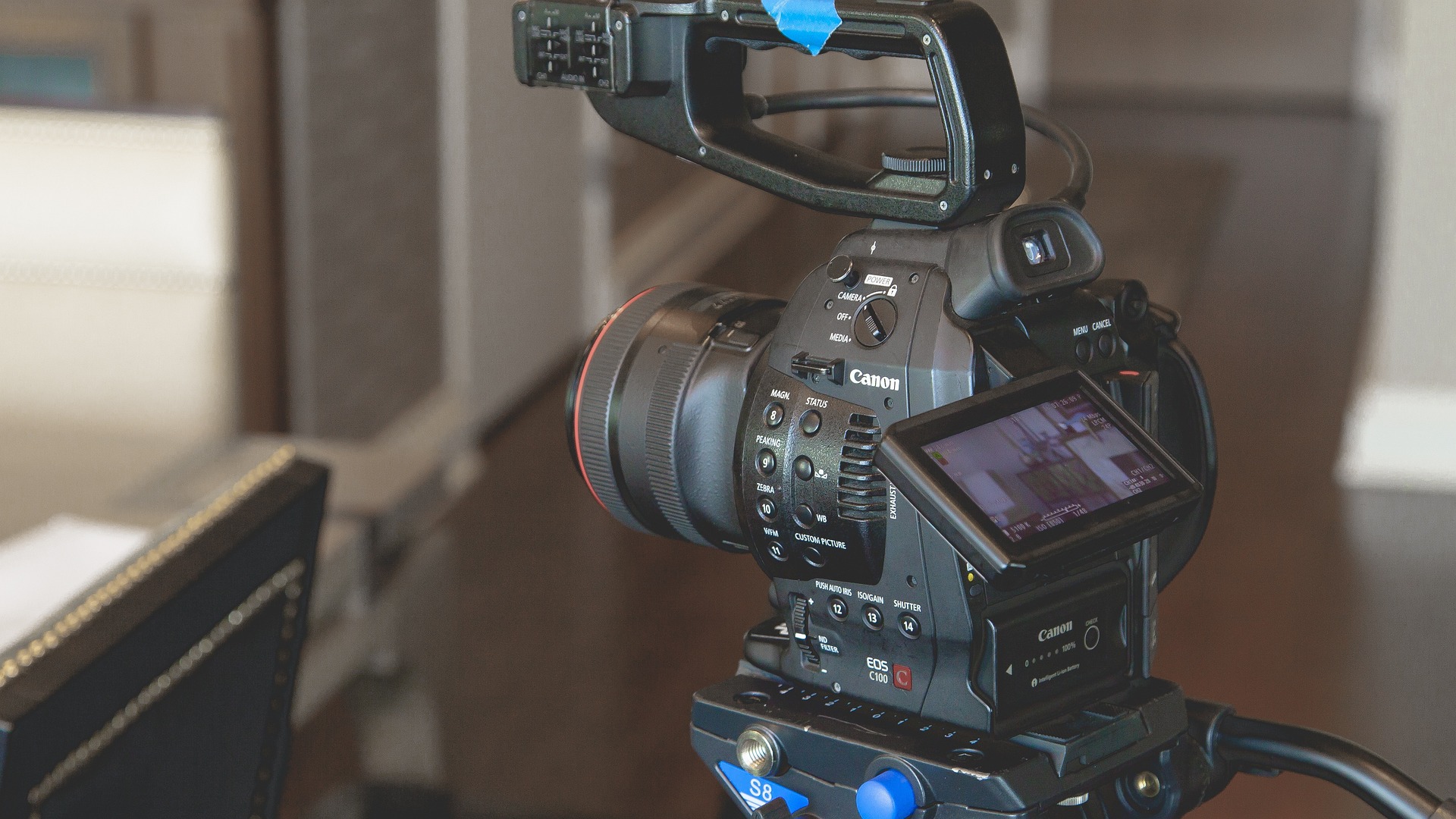Content assets are one of the most important elements of any content marketing strategy. They are high-value pieces of content that support various marketing initiatives and distribute information to an audience. Content assets can help you generate leads, build trust, increase conversions, enhance credibility, boost SEO, and grow brand awareness.
But what are content assets exactly? What are their benefits? What are their different types? And how can you create content assets that convert?
In this guide, we will answer these questions and provide you with some tips and best practices on how to create content assets that boost your content marketing strategy.
What are content assets?

A content asset is a piece of content that offers value to your audience and helps them solve a problem, learn something new, or achieve a goal. Content assets are usually longer, more in-depth, and more comprehensive than regular blog posts or social media posts. They are also more likely to be shared, linked to, and referenced by other sources, which increases their visibility and authority.
Content assets can be divided into two categories: ungated and gated.
Ungated content assets are freely accessible to anyone who visits your website or social media channels. They are meant to attract, educate, and engage your audience, and to drive traffic to your website. Some examples of ungated content assets are blogs, email newsletters, videos, case studies, and infographics.
Gated content assets are protected by a form or a landing page that requires the user to provide some information, such as their name, email address, or phone number, in order to access the content. They are meant to generate leads, build trust, and increase conversions. Some examples of gated content assets are whitepapers, webinars, ebooks, reports, and interactive assets.
Content assets are built to earn value for your brand, not just to create content for the sake of creating content. They should align with your content marketing goals, your brand identity, your audience’s needs, and your industry’s standards.
What are the benefits of content assets?
Content assets can help you achieve various benefits for your content marketing strategy, such as:
- Generating leads. Content assets can help you capture the contact information of your potential customers and nurture them through the buyer’s journey. By offering valuable and relevant content assets, you can entice your audience to exchange their information for your content, and then follow up with them with more content and offers that match their stage in the buyer’s journey.
- Building trust. Content assets can help you establish yourself as a credible and trustworthy source of information and solutions for your audience. By providing high-quality and useful content assets, you can demonstrate your expertise, your authority, and your value proposition, and convince your audience that you can help them solve their problems or achieve their goals.
- Increasing conversions. Content assets can help you persuade your audience to take action, such as signing up for a free trial, requesting a demo, or making a purchase. By creating content assets that address your audience’s pain points, challenges, and objections, and that showcase your unique selling points, benefits, and testimonials, you can influence your audience’s decision-making process and motivate them to convert.
- Enhancing credibility. Content assets can help you boost your reputation and visibility in your industry and among your peers. By creating content assets that showcase your original research, insights, opinions, and solutions, you can position yourself as a thought leader and an innovator, and attract the attention and respect of other influencers, experts, and media outlets.
- Boosting SEO. Content assets can help you improve your ranking and visibility in search engines, such as Google and Bing. By creating content assets that target relevant keywords, provide valuable and in-depth information, and that follow the SEO best practices, you can increase your chances of appearing in the top results for your audience’s search queries, and drive more organic traffic to your website.
- Growing brand awareness. Content assets can help you increase your exposure and recognition among your target audience and beyond. By creating content assets that are engaging, entertaining, and shareable, you can encourage your audience to spread the word about your brand, and reach new and wider audiences that might be interested in your products or services.
What are the types of content assets?
There are many types of content assets that you can create and use for your content marketing strategy, depending on your goals, your audience, your industry, and your resources. Here are eight essential types of content assets that you should consider:
Blogs

Blogs are one of the most common and popular types of content assets. They are articles that provide information, insights, tips, or opinions on a specific topic or niche. Blogs can help you attract, educate, and engage your audience, and drive traffic to your website.
They can also help you boost your SEO, as they can target relevant keywords, provide fresh and updated content, and generate backlinks and social shares. Some tips on how to create and optimize blogs are:
- Choose a topic that is relevant, interesting, and useful for your audience, and that matches your content marketing goals and your brand identity.
- Write a catchy and descriptive title that includes your focus keyword and that entices your audience to click and read your blog.
- Write a clear and compelling introduction that summarizes the main points and the benefits of your blog, and that hooks your audience’s attention and curiosity.
- Write a well-structured and easy-to-read body text that provides valuable and in-depth information, insights, tips, or opinions on your topic, and that supports your main points and arguments with facts, examples, and sources.
- Write a concise and effective conclusion that summarizes the main points and the takeaways of your blog, and that provides a call to action that invites your audience to comment, share, or take the next step in the buyer’s journey.
Email newsletters

Email newsletters are another common and popular type of content asset. They are emails that provide information, insights, tips, or offers on a specific topic or niche, and that are sent to a list of subscribers on a regular basis.
Email newsletters can help you build trust, increase conversions, and grow brand awareness. Email newsletters can also help you boost your SEO, as they can drive traffic to your website, generate backlinks and social shares, and increase your email deliverability and reputation. Some tips on how to create and optimize email newsletters are:
- Choose a topic that is relevant, interesting, and useful for your subscribers, and that matches your content marketing goals and your brand identity.
- Write a catchy and descriptive subject line that includes your focus keyword and that entices your subscribers to open and read your email newsletter.
- Write a clear and compelling preheader that summarizes the main points and the benefits of your email newsletter, and that hooks your subscribers’ attention and curiosity.
- Use personalization, segmentation, and automation to optimize your email newsletter for your subscribers and to increase your open rate, click-through rate, and conversion rate.
Videos

Videos are one of the most engaging and entertaining types of content assets. They are visual and audio content that provide information, insights, tips, or stories on a specific topic or niche. Videos can help you attract, educate, and engage your audience, and drive traffic to your website.
Some tips on how to create and optimize videos are:
- Choose a topic that is relevant, interesting, and useful for your audience, and that matches your content marketing goals and your brand identity.
- Write a catchy and descriptive title that includes your focus keyword and that entices your audience to watch your video.
- Write a clear and compelling description that summarizes the main points and the benefits of your video, and that hooks your audience’s attention and curiosity.
- Write a well-structured and easy-to-follow script that provides valuable and in-depth information, insights, tips, or stories on your topic, and that supports your main points and arguments with facts, examples, and sources.
- Record and edit your video using high-quality equipment, software, and techniques, and make sure that your video is clear, audible, and engaging.
Case studies

Case studies are one of the most persuasive and convincing types of content assets. They are stories that showcase how your product or service helped a specific customer or client solve a problem, achieve a goal, or improve a situation. Case studies can help you build trust, increase conversions, and enhance credibility.
Some tips on how to create and optimize case studies are:
- Choose a customer or client that is relevant, representative, and satisfied with your product or service, and that matches your content marketing goals and your brand identity.
- Write a clear and compelling summary that summarizes the main points and the results of your case study, and that hooks your audience’s attention and curiosity.
- Write a well-structured and easy-to-read story that follows the problem-solution-benefit framework, and that provides valuable and in-depth information, insights, and testimonials on how your product or service helped your customer or client. Use the following sections to organize your story:
- Background. This section introduces your customer or client, their industry, their challenges, and their goals.
- Solution. This section describes how your product or service addressed your customer’s or client’s challenges and goals, and how you implemented and delivered your solution.
- Results. This section quantifies and qualifies the results and the benefits that your customer or client achieved with your product or service, and how you measured and verified them.
- Testimonial. This section quotes your customer or client on their experience and satisfaction with your product or service, and how they would recommend it to others.
Whitepapers
Whitepapers are one of the most authoritative and informative types of content assets. They are documents that provide detailed and in-depth information, insights, analysis, or recommendations on a specific topic or niche. Whitepapers can help you generate leads, build trust, and enhance credibility.
Some tips on how to create and optimize whitepapers are:
- Choose a topic that is relevant, interesting, and useful for your audience, and that matches your content marketing goals and your brand identity.
- Write a catchy and descriptive title that includes your focus keyword and that entices your audience to download and read your whitepaper.
- Write a clear and compelling summary that summarizes the main points and the benefits of your whitepaper, and that hooks your audience’s attention and curiosity.
- Write a well-structured and easy-to-read document that provides valuable and in-depth information, insights, analysis, or recommendations on your topic, and that supports your main points and arguments with facts, examples, and sources. Use the following sections to organize your document:
- Introduction. This section introduces your topic, your purpose, your scope, and your methodology.
- Background. This section provides the context, the history, and the current situation of your topic, and identifies the problem or the opportunity that your whitepaper addresses.
- Solution. This section describes your solution, your approach, your features, and your benefits, and explains how your solution solves the problem or exploits the opportunity that your whitepaper addresses.
- Results. This section quantifies and qualifies the results and the outcomes that your solution achieves, and how you measured and verified them.
- Conclusion. This section summarizes the main points and the takeaways of your whitepaper and provides a call to action that invites your audience to contact you, request a demo, or start a free trial of your solution.
Webinars

Webinars are one of the most interactive and engaging types of content assets. They are live or recorded online presentations or workshops that provide information, insights, tips, or demonstrations on a specific topic or niche. Webinars can help you generate leads, build trust, and increase conversions.
Some tips on how to create and optimize webinars are:
- Choose a topic that is relevant, interesting, and useful for your audience, and that matches your content marketing goals and your brand identity.
- Write a catchy and descriptive title that includes your focus keyword and that entices your audience to register and attend your webinar.
- Write a clear and compelling description that summarizes the main points and the benefits of your webinar, and that hooks your audience’s attention and curiosity.
- Write a well-structured and easy-to-follow outline that provides valuable and in-depth information, insights, tips, or demonstrations on your topic, and that supports your main points and arguments with facts, examples, and sources.
- Record and edit your webinar using high-quality equipment, software, and techniques, and make sure that your webinar is clear, audible, and engaging.
- Use polls, surveys, quizzes, Q&A sessions, and other interactive features to optimize your webinar for your audience and to increase your engagement, feedback, and conversion rate.
Infographics

Infographics are one of the most visual and attractive types of content assets. They are images that provide information, insights, tips, or data on a specific topic or niche, using charts, graphs, icons, colors, and text. Infographics can help you attract, educate, and engage your audience, and drive traffic to your website.
Some tips on how to create and optimize infographics are:
- Choose a topic that is relevant, interesting, and useful for your audience, and that matches your content marketing goals and your brand identity.
- Write a catchy and descriptive title that includes your focus keyword and that entices your audience to view and share your infographic.
- Write a clear and compelling summary that summarizes the main points and the benefits of your infographic, and that hooks your audience’s attention and curiosity.
- Design and create your infographic using high-quality tools, software, and techniques, and make sure that your infographic is clear, readable, and engaging.
Interactive assets
Interactive assets are one of the most innovative and fun types of content assets. They are content that provide information, insights, tips, or data on a specific topic or niche, using interactive features, such as quizzes, calculators, games, maps, or simulations. Interactive assets can help you generate leads, build trust, and increase conversions.
Some tips on how to create and optimize interactive assets are:
- Choose a topic that is relevant, interesting, and useful for your audience, and that matches your content marketing goals and your brand identity.
- Write a catchy and descriptive title that includes your focus keyword and that entices your audience to use and share your interactive asset.
- Write a clear and compelling summary that summarizes the main points and the benefits of your interactive asset, and that hooks your audience’s attention and curiosity.
- Develop and create your interactive asset using high-quality tools, software, and techniques, and make sure that your interactive asset is clear, functional, and engaging.
Wrapping Up
Content assets are one of the most important elements of any content marketing strategy. They are high-value pieces of content that support various marketing initiatives and distribute information to an audience. Content assets can help you generate leads, build trust, increase conversions, enhance credibility, boost SEO, and grow brand awareness.
In this article, we have answered the questions of what are content assets, what are the benefits of content assets, what are the types of content assets, and how to create content assets that convert. We have also provided you with some tips and best practices on how to create content assets that boost your content marketing strategy.

